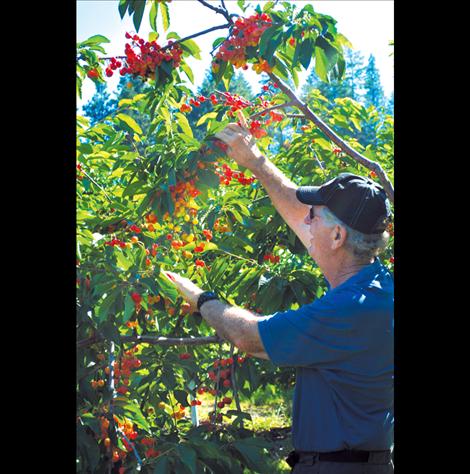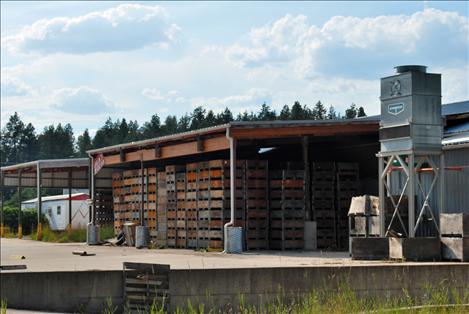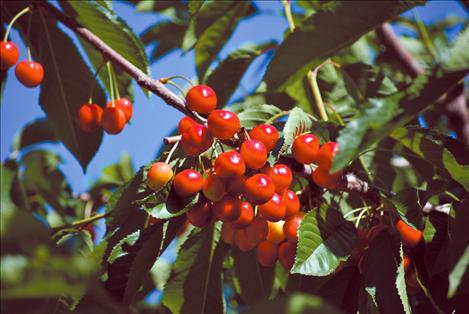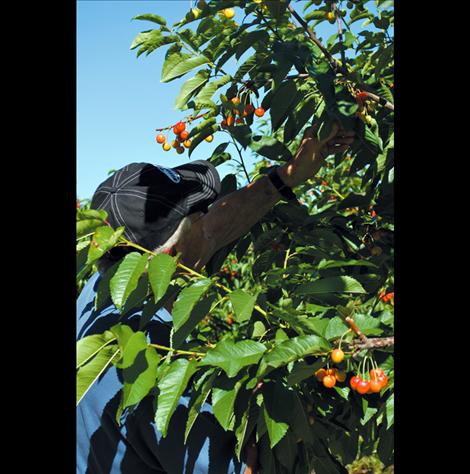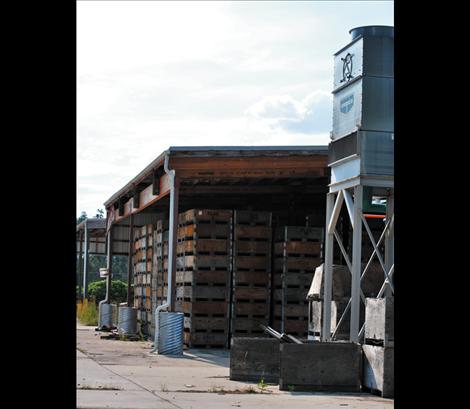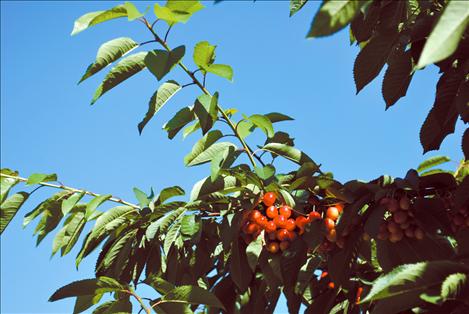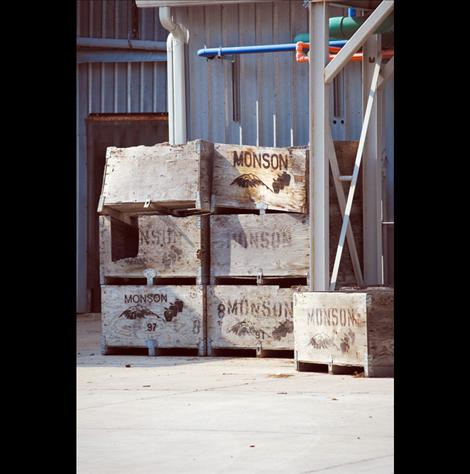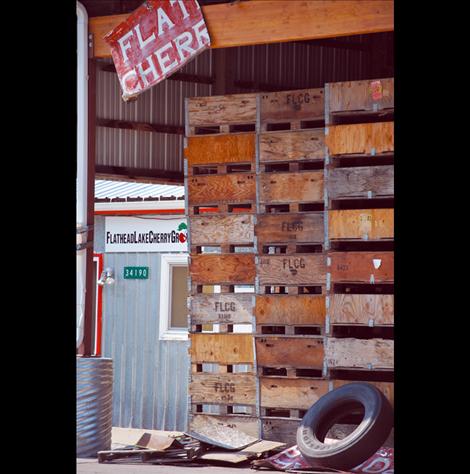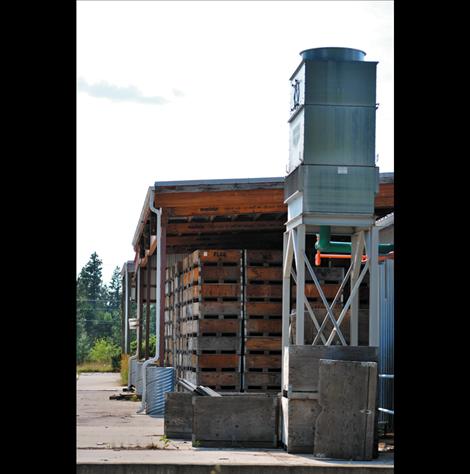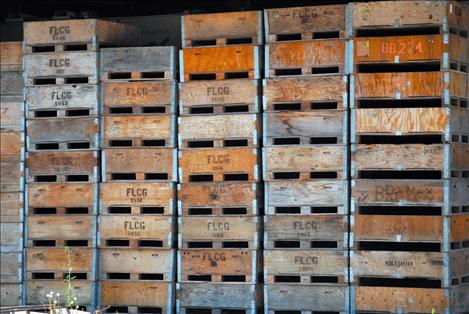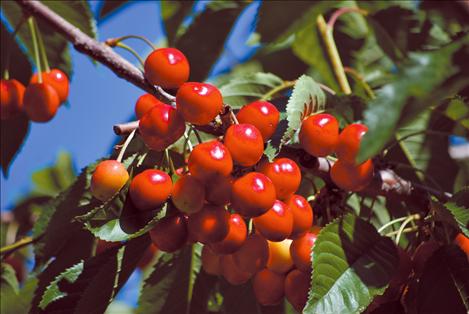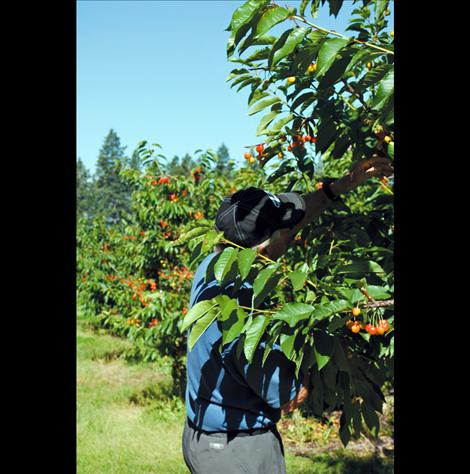Flathead cherry marketing thrives with Co-op
Hey savvy news reader! Thanks for choosing local.
You are now reading
1 of 3 free articles.
Cherries were first introduced to Montana in 1866, according to the United States Department of Agriculture. Grower’s interest blossomed quickly, and many began planting cherry trees around the Flathead Valley.
By 1893 the trees had flourished in maturity, growing from eight to 12 feet tall.
Cherry trees can take up to five years to bear fruit, and when mature may produce more than 100 pounds of fruit in a given season. The orchard can be commercially productive for more than 50 years.
To market the ever-growing crop, the Flathead Lake Cherry Growers Co-op started at the plant on Finley Point in 1935.
“The Co-op was the idea of getting everybody together,” Co-op Board Member Dick Beighle said. “Before that there had been some interest for orchards but no market.”
The market was still marginal when Beighle’s family acquired their land on Finley Point in 1980, but “nobody was making any money on cherries,” he said.
Yet the Co-op remained intact and has expanded considerably since then.
“The Flathead Lake Cherry Co-op could be the oldest agricultural Co-op in the state,” said Bruce Johnson, president of Flathead Lake Cherry Co-op. Most of the cherry growers in the area are part of the Co-op, according to Johnson, who’s served on the board for five years.
There are nine board directors and 72 growers involved in the Co-op, and approximately 600 acres of orchards — an increase from 70 growers and 500 acres from last year.
The Co-op is all of the Northwest Cherry Growers Institute, comprising a group of growers based out of Oregon, Idaho, Washington, and Utah.
Northwest Cherries is in a partnership with Monson Fruit Company that does the processing and packaging of the fruit for the Co-op.
“I work for the packing company, and they work for the Co-op,” said Brian Campbell, field representative for Monson. Campbell explained that the marketing company Domex sells the cherries all over the world. Many of the commercial boxes end up in eastern countries, and about half of them go to Asia. Beighle said that South Korea is the best buyer, China is second, and that marketing has gotten Montana cherries to Japan and Taiwan.
The other half of the cherries are shipped to California, where Walmart and Costco headquarters are located.
“They get down there, process, and are shipped back up and all over,” Beighle said. “If we had cherries in Costco out here in Missoula, they go to California and came back up to the stores.”
Others go to Texas, Florida, or stayed in the northwest.
Campbell said that if growers in the Flathead Valley planted more varieties that produce later in the season, Montana could sell the latest cherries of the season.
“The newer varieties make for a better market for them and they sell better. They come a little bit later in the year and benefit Montana,” Campbell said. “Things change in agriculture all the time. Varieties and markets change.”
Some of the cherries go out packaged as Montana cherries, and others are marketed under the label Northwest Cherries.
Last year, 10 to 15 percent of a specific bunch of boxes were labeled and marketed as a Montana premium brand.
“I designed for the Co-op, maybe three years ago, a special box with our logo on there. It’s called Montana Premium Cherries, and only the best cherries we grow go into that box,” said Ken Edgington, Co-op board member and media director. “A cherry about the size of a quarter or bigger would go into the premium box.”
Super One Foods had some beautiful displays last year, and used the box in display as a point of purchase item that would showcase Montana Cherries, according to Edgington.
Marketers began getting feedback from smaller grocery stores that cherries that come on the market later were much better tasting, according to Beighle.
“Montana cherries really sell,” Beighle said. “Our distributor is picking up Montana boxes in Washington and taking them to Minneapolis and sent us back pictures of people waiting in line to buy the beautiful box with Flathead Cherries on it.”
The Co-op is working to make Montana Cherries an identifiable symbol, and Beighle thinks Montana is set up for an excellent future.
“The drought in California and increasing heat is starting to wipe out cherries, and growers are moving to other states to produce,” he said.
Eastern Montana farmland may be very valuable given it provides dry, warm days needed for the cherry.
“I predict if we get the right variety we can handle frost in the spring and we are experimenting trying to find a more hardy cherry,” Beighle said.
While a small percentage of cherries stay local, growers that are part of the Co-op have the option to sell 20 percent of it to local venues, such as the Cherry Festival and farmers markets.
The vast majority of cherries being sold up and down the road locally are coming directly from the orchards.
(Editor’s note: this is part two of a three part series on Flathead Cherries.)















